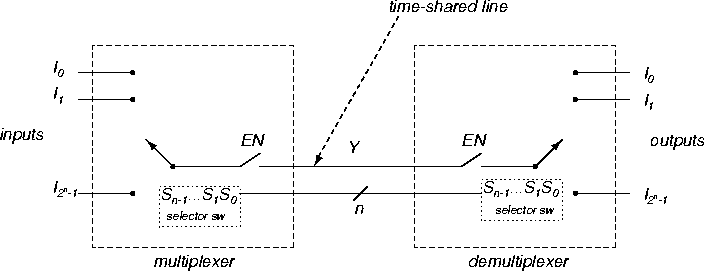 |
Multiplexers and demultiplexers are used in serial data transmission systems where a single transmission line can be used to transmit information in a large number of data lines by letting each data line have access to the transmission line on a time-share basis, Figure 178.
Multiplexers selectively connect one and only one of 2n input lines Ii to the transmission line Y.
Example. Here is a truth table defining a 4-1 MUX:
| EN | S1 | S0 | Y |
| 0 | X | X | 0 |
| 1 | 0 | 0 | I0 |
| 1 | 0 | 1 | I1 |
| 1 | 1 | 0 | I2 |
| 1 | 1 | 1 | I3 |
Example. Multiplexers can be used
to implement combinational logic functions.
Consider the cannonical SOP expression
There are no specific demultiplexers, since the DMUX function can be implemented using a decoder.
Exercise. Show how a DMUX can be built from a decoder.
ANU Engineering - ENGN2211